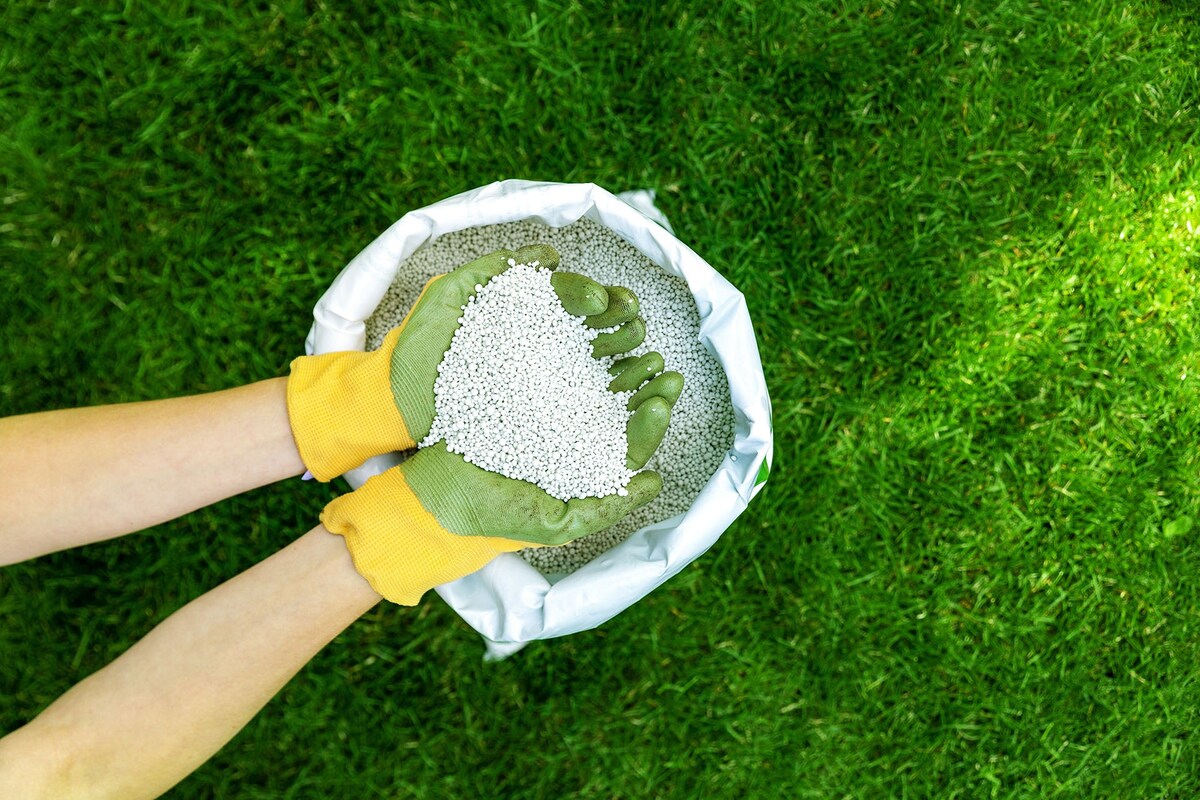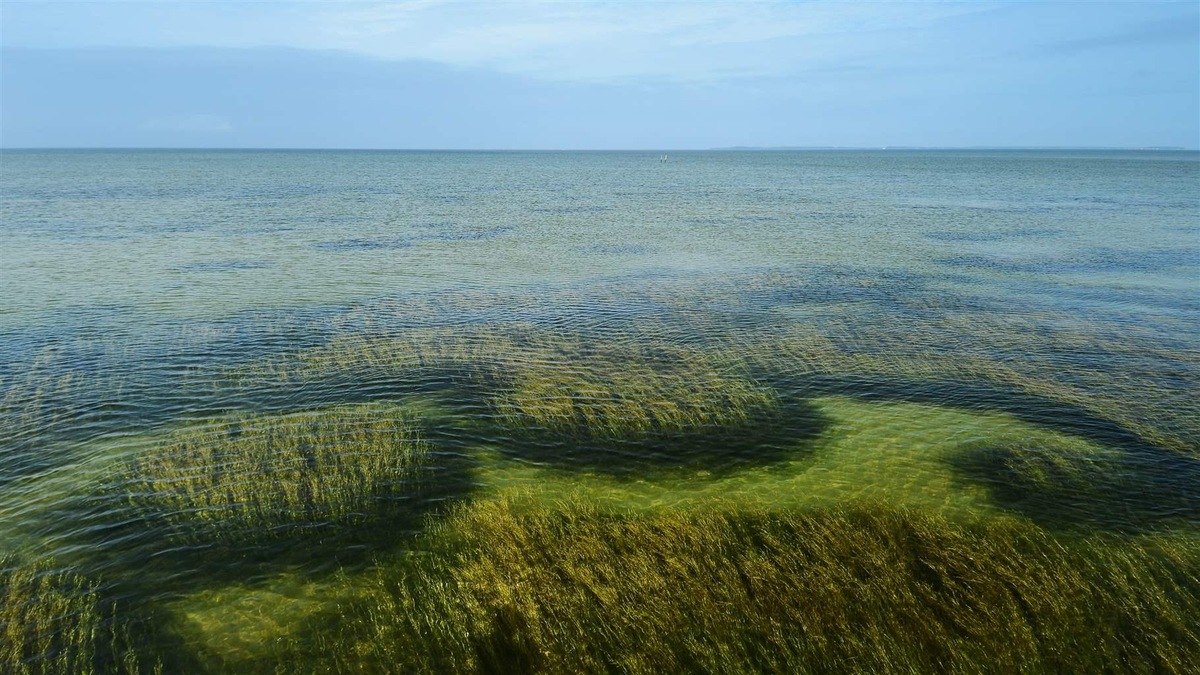Home>Gardening & Outdoor>Landscaping Ideas>What Nutrients Does Grass Need


Landscaping Ideas
What Nutrients Does Grass Need
Published: January 28, 2024
Discover the essential nutrients that grass needs for healthy growth and vibrant landscaping ideas to keep your lawn looking its best. Explore expert tips for maintaining a lush, green lawn.
(Many of the links in this article redirect to a specific reviewed product. Your purchase of these products through affiliate links helps to generate commission for Storables.com, at no extra cost. Learn more)
Introduction
Grass, the lush green carpet that adorns lawns, parks, and landscapes, is not just a simple plant. It is a living organism that requires essential nutrients to thrive and maintain its vibrant appearance. Understanding the specific nutrients that grass needs is crucial for anyone responsible for its care and maintenance. By delving into the intricate world of grass nutrients, we can uncover the key elements that contribute to its health and vitality.
Grass, like all plants, relies on a combination of macronutrients, micronutrients, and secondary nutrients to support its growth and development. Each of these nutrients plays a unique role in ensuring that the grass can photosynthesize, absorb water and nutrients from the soil, and withstand environmental stressors. By exploring the intricate web of nutrients that grass requires, we can gain a deeper appreciation for the complexity of its nutritional needs.
In this article, we will embark on a journey to unravel the mystery of grass nutrients. We will explore the essential macronutrients, such as nitrogen, phosphorus, and potassium, which form the building blocks of healthy grass growth. Additionally, we will delve into the world of micronutrients, including iron, manganese, and zinc, which are vital for supporting various metabolic processes within the grass. Furthermore, we will shed light on the significance of secondary nutrients, such as calcium, magnesium, and sulfur, in maintaining the structural integrity and resilience of the grass.
By gaining a comprehensive understanding of the nutrients that grass needs, we can equip ourselves with the knowledge to nurture and sustain thriving lawns and landscapes. As we unravel the intricate web of grass nutrients, we will uncover the telltale signs of nutrient deficiencies and learn how to address them effectively. Ultimately, by delving into the world of grass nutrients, we can empower ourselves to cultivate vibrant, healthy, and resilient grass that enhances the beauty of outdoor spaces.
Key Takeaways:
- Grass needs nutrients like nitrogen, phosphorus, and potassium to stay healthy and green. Understanding these nutrients helps people take care of their lawns and landscapes effectively.
- Noticing signs of nutrient deficiencies in grass, like yellowing leaves, helps people address imbalances and ensure their grass gets the right nutrients to thrive.
Macronutrients
Macronutrients are the essential elements that grass requires in relatively large quantities to support its fundamental growth processes. These primary nutrients form the backbone of the grass's nutritional needs, playing a pivotal role in shaping its overall health and vitality. Understanding the significance of macronutrients is crucial for anyone involved in lawn care and landscaping, as it provides valuable insights into the foundational elements that sustain lush, vibrant grass.
Nitrogen
Nitrogen stands as the cornerstone of grass nutrition, fueling vigorous leaf and stem growth. This vital macronutrient is responsible for imparting the rich green hue that characterizes healthy grass. It plays a pivotal role in chlorophyll production, the pigment essential for photosynthesis. Adequate nitrogen levels promote robust blade development, ensuring a dense and lush lawn that exudes vitality.
Phosphorus
Phosphorus is instrumental in fostering strong root development and overall plant vigor. This macronutrient facilitates energy transfer within the grass, enabling efficient utilization of other nutrients. Additionally, phosphorus contributes to seedling establishment and promotes early root growth, laying the groundwork for a resilient and well-established grass system.
Potassium
Potassium, often referred to as potash, plays a multifaceted role in grass health. It aids in regulating water uptake and retention, bolstering the grass's ability to withstand drought and environmental stress. Furthermore, potassium contributes to disease resistance and overall plant hardiness, fortifying the grass against adverse conditions and promoting long-term resilience.
By comprehensively understanding the role of macronutrients in sustaining healthy grass growth, individuals can make informed decisions regarding fertilization and soil management. Balancing the levels of nitrogen, phosphorus, and potassium is essential for promoting robust grass development and maintaining a vibrant, verdant lawn. This foundational knowledge empowers individuals to optimize their lawn care practices, ensuring that their grass receives the essential macronutrients it needs to thrive.
In essence, macronutrients form the bedrock of grass nutrition, underpinning its ability to flourish and adorn outdoor spaces with lush greenery. By recognizing the pivotal role of nitrogen, phosphorus, and potassium, individuals can cultivate thriving lawns that serve as vibrant, resilient backdrops for outdoor enjoyment and relaxation.
Read more: What Does Grass Seed Need To Germinate
Micronutrients
Micronutrients, although required in smaller quantities compared to macronutrients, play a crucial role in supporting various metabolic and physiological processes within grass plants. These essential elements, including iron, manganese, zinc, copper, boron, and molybdenum, are instrumental in ensuring the overall health, resilience, and aesthetic appeal of grass.
Iron
Iron is indispensable for chlorophyll synthesis, which is essential for photosynthesis and the vibrant green coloration of grass blades. A deficiency in iron can lead to chlorosis, causing the grass to exhibit yellowing or whitening of the leaves, indicating a lack of this vital micronutrient.
Manganese
Manganese contributes to enzyme activation and is involved in the photosynthetic process. It aids in the breakdown of carbohydrates and nitrogen metabolism, playing a pivotal role in ensuring optimal grass growth and development.
Zinc
Zinc is crucial for the synthesis of growth hormones and the regulation of protein synthesis within grass plants. It also aids in chlorophyll production and carbohydrate metabolism, contributing to overall plant vigor and resilience.
Read more: What Grass Needs The Least Water
Copper
Copper is involved in various enzymatic reactions, including those related to lignin formation and cell wall structure. It plays a role in the utilization of iron and contributes to overall plant health and disease resistance.
Boron
Boron is essential for cell wall formation, pollen tube elongation, and seed and fruit development. It also aids in the uptake of other nutrients, contributing to the overall structural integrity and reproductive capacity of grass plants.
Molybdenum
Molybdenum is integral to nitrogen metabolism, facilitating the conversion of nitrates into amino acids within grass plants. It also plays a role in enzyme systems involved in nitrogen fixation, impacting overall plant growth and nitrogen utilization.
By recognizing the significance of micronutrients in sustaining healthy grass growth, individuals can implement targeted fertilization and soil management practices to address potential deficiencies. Ensuring that grass plants receive adequate levels of micronutrients is essential for promoting robust metabolic processes, disease resistance, and overall aesthetic appeal.
In essence, micronutrients are the unsung heroes of grass nutrition, working behind the scenes to support vital physiological functions and contribute to the lush, vibrant appearance of lawns and landscapes. By acknowledging the pivotal role of micronutrients, individuals can cultivate thriving grass that serves as a testament to meticulous care and attention to detail.
Secondary Nutrients
In addition to macronutrients and micronutrients, secondary nutrients play a crucial role in supporting the overall health and vitality of grass plants. These essential elements, including calcium, magnesium, and sulfur, contribute to various physiological processes and structural components within grass, ensuring robust growth and resilience.
Calcium
Calcium is integral to cell wall formation and stability, contributing to the structural integrity of grass plants. It plays a pivotal role in root and shoot development, aiding in the uptake and transport of other nutrients. Additionally, calcium regulates various enzymatic processes, impacting overall plant vigor and disease resistance.
Magnesium
Magnesium is a central component of chlorophyll, essential for photosynthesis and the production of carbohydrates. It plays a crucial role in energy transfer within grass plants, contributing to metabolic processes and overall plant vitality. Adequate levels of magnesium are essential for maintaining vibrant green foliage and promoting optimal growth.
Sulfur
Sulfur is involved in the synthesis of amino acids and proteins within grass plants, playing a pivotal role in overall plant nutrition and resilience. It contributes to enzyme activation and is essential for the formation of essential plant compounds. Additionally, sulfur aids in the development of chlorophyll, impacting the grass's ability to harness sunlight for energy production.
By recognizing the significance of secondary nutrients in sustaining healthy grass growth, individuals can implement targeted fertilization and soil management practices to ensure that grass plants receive the essential elements they need to thrive. Balancing the levels of calcium, magnesium, and sulfur is crucial for promoting robust metabolic processes, structural integrity, and overall aesthetic appeal of lawns and landscapes.
In essence, secondary nutrients serve as the supporting cast in the intricate symphony of grass nutrition, working in harmony with macronutrients and micronutrients to sustain vibrant, resilient grass. By acknowledging the pivotal role of secondary nutrients, individuals can cultivate thriving lawns that stand as a testament to meticulous care and a deep understanding of the intricate nutritional needs of grass plants.
Nutrient Deficiencies
Nutrient deficiencies in grass can manifest in a variety of visual symptoms, serving as crucial indicators of underlying imbalances in the plant's nutritional intake. By recognizing and understanding these deficiencies, individuals can take proactive measures to address and rectify the underlying issues, thereby promoting the overall health and vibrancy of their grass.
Read more: How Much Clearance Does A Patio Heater Need
Nitrogen Deficiency
When grass experiences a shortage of nitrogen, it often exhibits a pale or yellowish hue, indicating a lack of chlorophyll production. The blades may appear stunted, and overall growth may be slow. Additionally, the grass may display increased susceptibility to environmental stressors and a diminished ability to recover from mowing or foot traffic.
Phosphorus Deficiency
In the presence of phosphorus deficiency, grass plants may display a purplish discoloration, particularly in the older leaves. Slow growth and delayed maturity are common signs, as phosphorus plays a pivotal role in energy transfer and root development. The grass may also exhibit reduced tolerance to environmental stress and a weakened capacity to establish strong root systems.
Potassium Deficiency
A deficiency in potassium can lead to yellowing or browning of leaf margins, often progressing inward from the tips. The grass may appear weak and prone to wilting, as potassium is essential for regulating water uptake and maintaining turgor pressure within plant cells. Additionally, potassium-deficient grass may exhibit increased susceptibility to disease and environmental stress.
Iron Deficiency
Iron deficiency often results in interveinal chlorosis, where the areas between leaf veins turn yellow while the veins remain green. This condition can give the grass a striped appearance, signaling a lack of iron for chlorophyll synthesis. The grass may appear weak and lackluster, with diminished overall vigor and resilience.
Micronutrient Deficiencies
Micronutrient deficiencies, such as those of manganese, zinc, copper, boron, and molybdenum, can manifest in various visual symptoms, including leaf discoloration, stunted growth, and distorted leaf structures. These deficiencies can impact the overall metabolic processes and physiological functions within grass plants, leading to diminished health and aesthetic appeal.
Addressing Nutrient Deficiencies
Addressing nutrient deficiencies in grass involves targeted fertilization and soil management practices. By conducting soil tests and analyzing the visual symptoms exhibited by the grass, individuals can identify specific deficiencies and tailor their approach to rectifying the imbalances. This may involve the application of specialized fertilizers or soil amendments to restore optimal nutrient levels and promote healthy grass growth.
By recognizing the telltale signs of nutrient deficiencies and taking proactive measures to address them, individuals can ensure that their grass receives the essential elements it needs to thrive. This proactive approach to nutrient management is essential for cultivating lush, vibrant lawns and landscapes that serve as inviting outdoor spaces for leisure and relaxation.
Conclusion
In conclusion, the intricate world of grass nutrients unveils a captivating tapestry of essential elements that underpin the health, resilience, and aesthetic appeal of lawns and landscapes. From the foundational macronutrients, including nitrogen, phosphorus, and potassium, to the often-overlooked micronutrients and secondary nutrients, each component plays a pivotal role in sustaining the vibrant greenery that adorns outdoor spaces.
By gaining a comprehensive understanding of the specific nutrients that grass needs, individuals can embark on a journey of informed lawn care and landscaping practices. The recognition of nutrient deficiencies and their visual symptoms empowers individuals to take proactive measures to address imbalances and restore optimal nutrient levels, ensuring that their grass thrives in a nurturing environment.
Furthermore, the significance of nutrient management extends beyond mere plant nutrition. It encompasses the creation of inviting outdoor spaces that serve as havens for relaxation, recreation, and natural beauty. Vibrant, resilient grass not only enhances the visual appeal of landscapes but also contributes to the overall well-being of individuals who seek solace and rejuvenation in outdoor environments.
As stewards of the natural world, individuals entrusted with the care of lawns and landscapes hold the key to unlocking the full potential of grass plants. By embracing the multifaceted realm of grass nutrients, they can cultivate thriving outdoor spaces that stand as testaments to meticulous care, attention to detail, and a deep understanding of the intricate nutritional needs of grass.
In essence, the journey into the world of grass nutrients transcends mere plant care; it embodies a harmonious partnership with nature, where the nurturing of vibrant, resilient grass becomes a reflection of dedication, knowledge, and a profound appreciation for the beauty of the natural world. Through the lens of grass nutrients, individuals embark on a transformative journey, where the act of caring for grass transcends routine maintenance and evolves into a profound expression of reverence for the intricate web of life that thrives beneath our feet.
Frequently Asked Questions about What Nutrients Does Grass Need
Was this page helpful?
At Storables.com, we guarantee accurate and reliable information. Our content, validated by Expert Board Contributors, is crafted following stringent Editorial Policies. We're committed to providing you with well-researched, expert-backed insights for all your informational needs.











0 thoughts on “What Nutrients Does Grass Need”